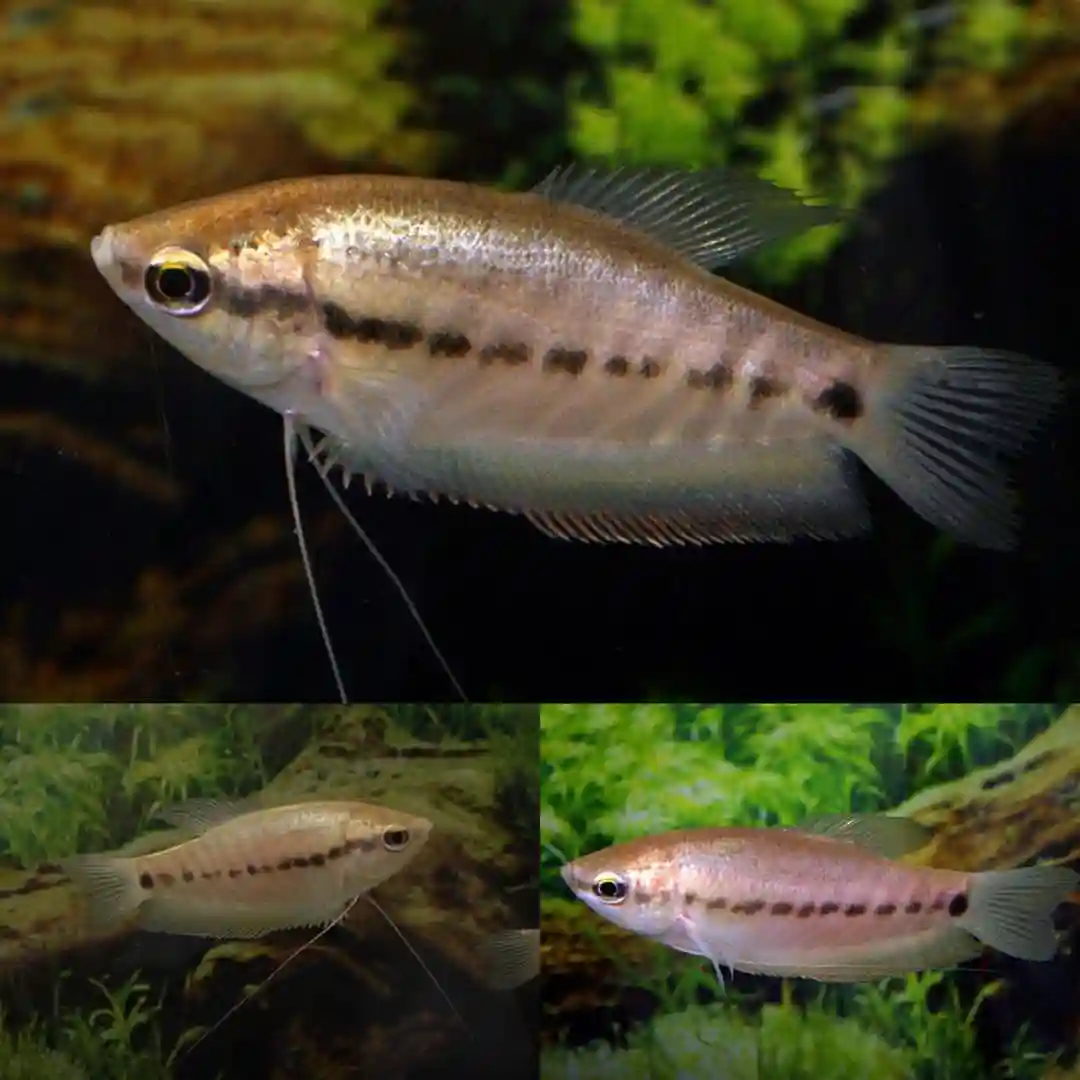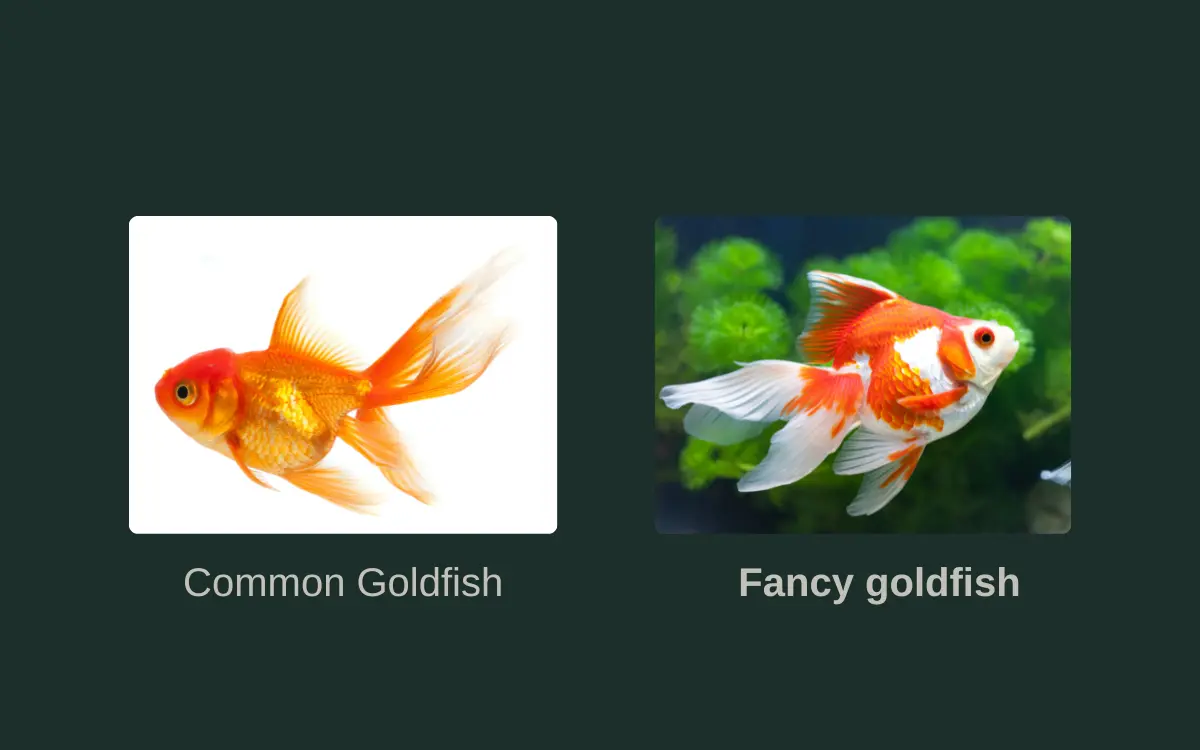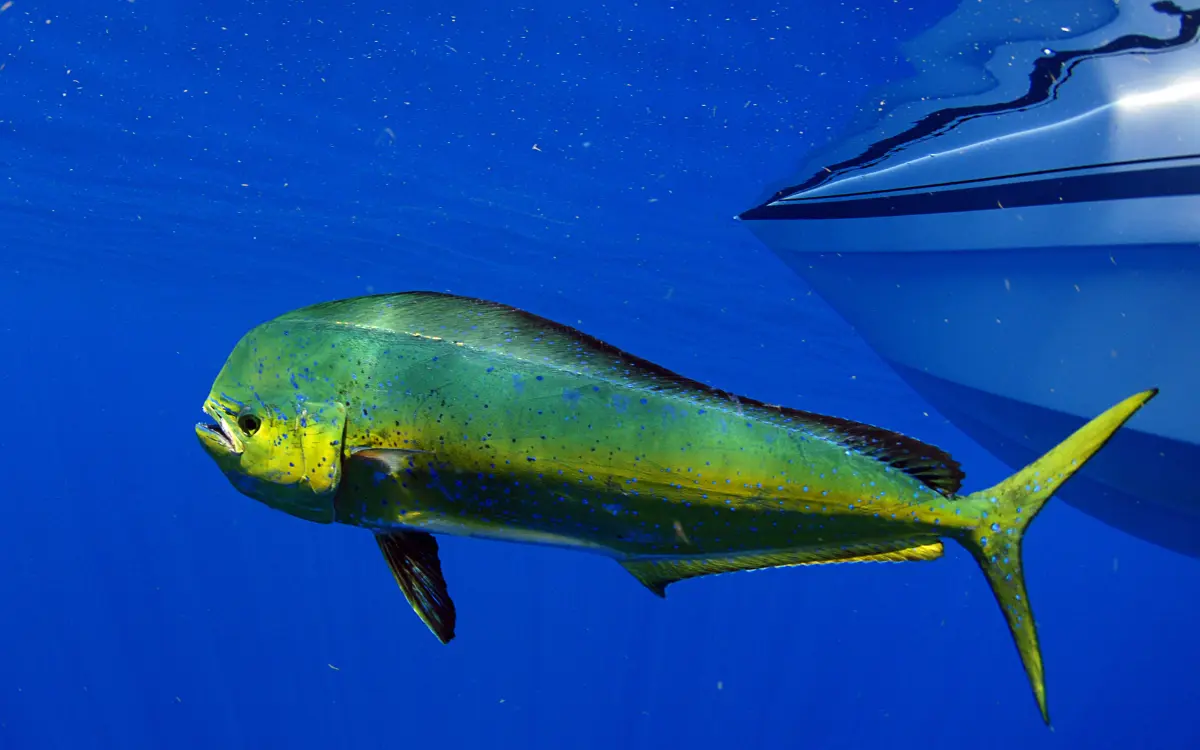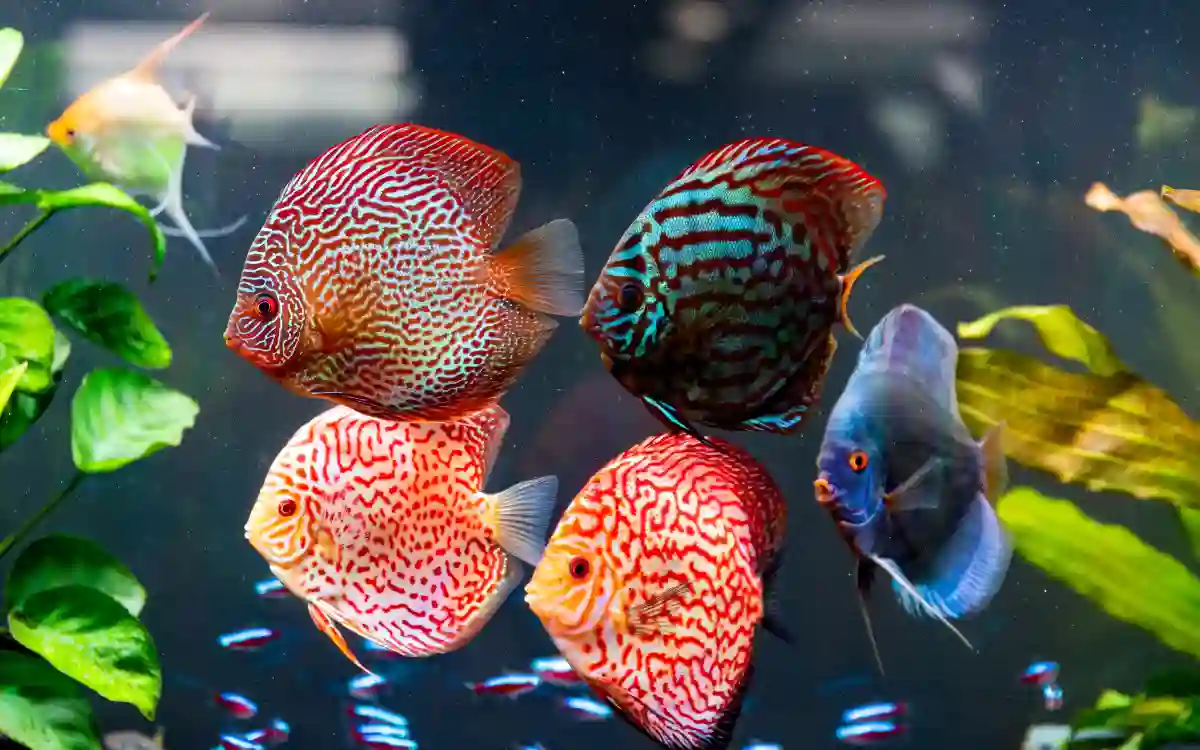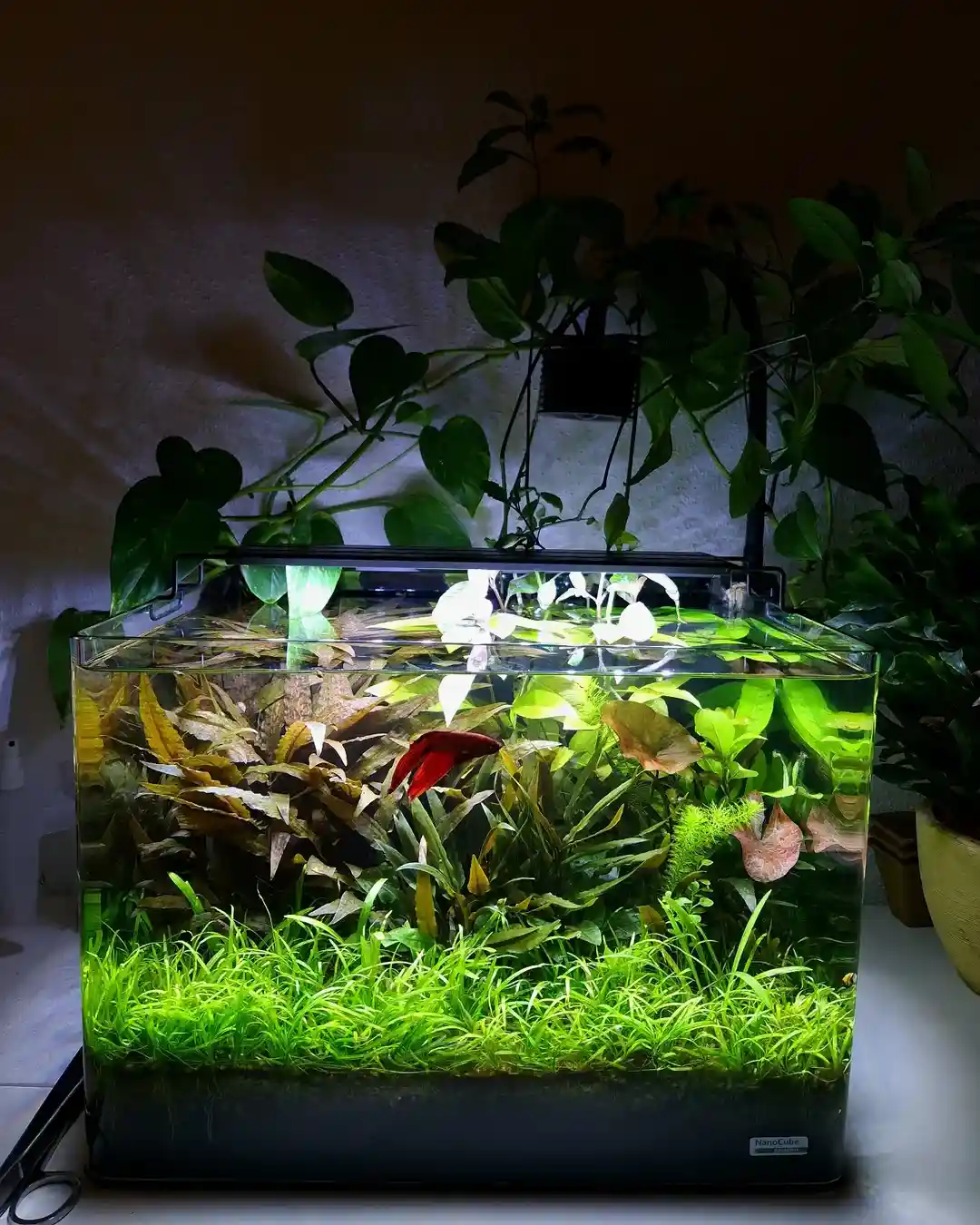Veil Tail Betta Care: Traits, Setup, Feeding & Behavior
Veil Tail Bettas are the most recognizable Betta fish variety, known for their long, flowing tails that drape like silk. Graceful, colorful, and beginner-friendly, these fish are easy to care for and add vibrant charm to any aquarium. While newer Betta types may get more attention, Veil Tails remain a timeless favorite.
This guide covers everything you need to know—traits, care tips, tank setup, feeding, and ideal companions—to help your Veil Tail Betta thrive.
What Is a Veil Tail Betta?
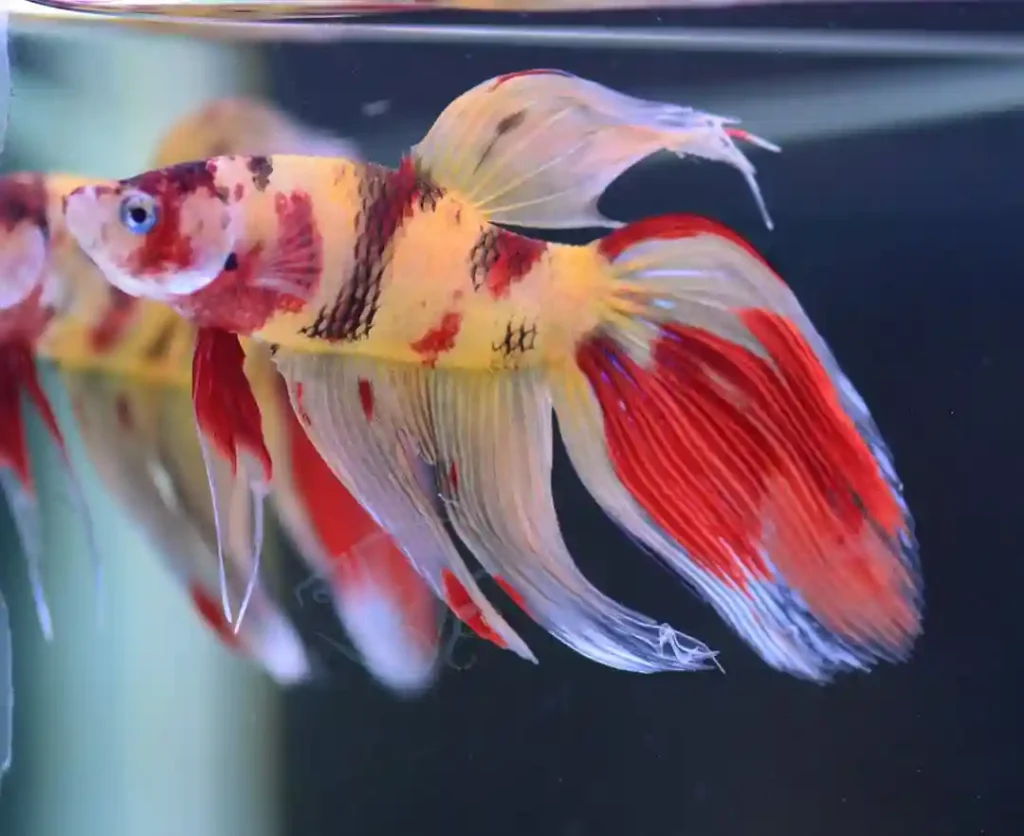
The Veil Tail Betta (Betta splendens) is a long-finned variety with a downward-arching tail that flows like a veil. It’s the most common Betta type, mass-bred for decades and widely sold in pet stores. Though less popular in Betta shows today, they’re still beloved for their classic look and hardy nature.
Color Varieties:
Veil Tails come in nearly every color—solid red, electric blue, white, black, metallic shades, and stunning bi-colors.
How to Identify a Veil Tail Betta
| Feature | Description |
| Tail Shape | Long, drooping tail that arches downward like a curtain |
| Fin Style | Flowing dorsal and anal fins that create a balanced look |
| Color Range | Wide range: red, blue, white, black, metallic, pastel |
| Male vs Female | Males have longer, more dramatic fins; females are shorter-finned |
🔗 See more Betta types in our Types of Betta Fish guide
Personality & Behavior
Veil Tail Bettas are generally peaceful but still territorial, especially with other males. They enjoy exploring their environment, flaring occasionally, and building bubble nests under leaves or floating decor.
Behavior Traits:
- Can be active or mellow depending on tank conditions
- Prefer calm water flow due to delicate fins
- May nip at tank mates if stressed or crowded
Ideal Tank Setup for Veil Tail Bettas
Veil Tails need a safe, low-flow tank with enough space to swim without damaging their fins. A natural setup with plants and hiding spots helps them feel secure.
Tank Setup Essentials:
- Tank Size: Minimum 5 gallons (10+ gallons improves stability)
- Filter: Sponge or low-flow filter to protect fins
- Substrate: Fine gravel or sand
- Plants: Anubias, Java Fern, Amazon Sword, Water Sprite (floating)
- Decor: Caves, Betta logs, silk plants
- Lighting: Low to moderate intensity
- Lid: Always use a lid—Bettas are known to jump
Compatible Tank Mates
While Veil Tails can coexist with peaceful tank mates, their slow movement and long fins make them vulnerable to fin nippers or aggressive species.
Good Tank Mates:
- Nerite snails
- Mystery snails
- Corydoras catfish
- Ember tetras (in larger, well-decorated tanks)
- Kuhli loaches
Avoid:
- Tiger Barbs, Serpae Tetras (fin nippers)
- Male Bettas (never house two males together)
- Fast or aggressive species
🔗 Find more suggestions in our Best Betta Tank Mates guide
Feeding & Nutrition
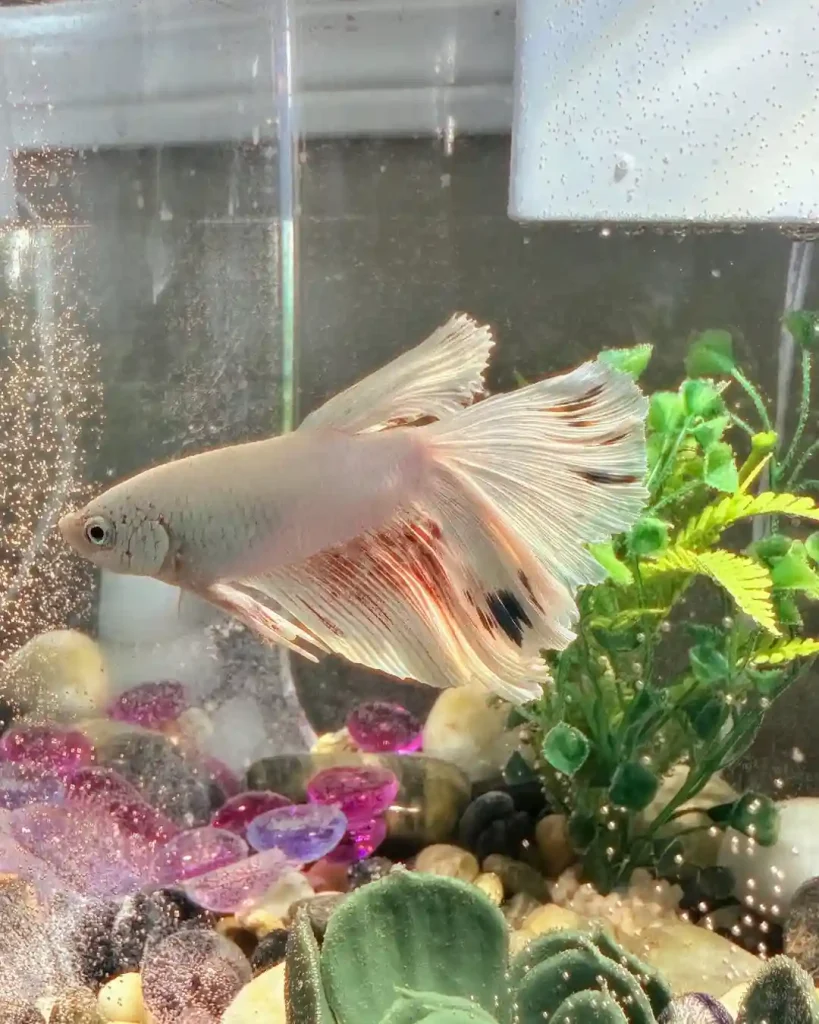
Veil Tail Bettas have healthy appetites and benefit from a protein-rich diet that supports their energy levels and fin health.
Best Foods for Veil Tails:
- High-quality Betta pellets
- Frozen bloodworms or brine shrimp
- Daphnia (live or frozen) for digestion
- Freeze-dried treats (occasionally)
💡 Feeding Tip: Feed small portions twice daily. Remove uneaten food to prevent water quality issues like ammonia buildup or bloating.
Health Concerns for Veil Tail Bettas
Their flowing fins make Veil Tails more prone to certain health problems. With good care and a stable tank, most issues are preventable.
Common Issues:
| Condition | Cause | Prevention |
| Fin Rot | Poor water quality or injury | Clean water, gentle decor |
| Swim Bladder Disorder | Overfeeding or constipation | Balanced diet, occasional fasting |
| Torn Fins | Sharp decor or high flow | Use silk/plastic decor, gentle filter |
Water Parameters to Maintain:
- Temperature: 78–80°F
- pH: 6.5–7.5
- Ammonia/Nitrite: 0 ppm
- Nitrate: < 20 ppm
Breeding Veil Tail Bettas (Optional for Hobbyists)
Veil Tails can breed like other Betta fish, but it requires careful setup and supervision. The male builds a bubble nest and courts the female. However, without proper knowledge, breeding can lead to injury or stress.
If you’re a beginner, it’s best to avoid breeding until you’ve done deeper research or received guidance.
Where to Buy & Price Range
You can find Veil Tail Bettas in nearly any pet store, local aquarium shop, or online retailer. They’re one of the most affordable Betta varieties, usually priced between $3–$8 USD.
What to Look For:
- Bright, clear eyes
- Even, undamaged fins
- No white edges, tears, or signs of illness
Is the Veil Tail Betta Right for You?
Great choice for:
- New aquarists
- Small or mid-sized aquariums
- Fans of flowing fins and calm fish
Not ideal for:
- High-flow tanks
- Fin-nipping community setups
- Those seeking rare or show-grade Bettas
If you’re starting out or want a peaceful, elegant pet fish, the Veil Tail Betta is a reliable and rewarding option.
Frequently Asked Questions
Are Veil Tail Bettas good for beginners?
Yes! Veil Tail Bettas are one of the best choices for beginner fishkeepers. They’re hardy, low-maintenance, and adapt well to smaller tanks with proper care.
How long do Veil Tail Bettas live?
With proper care, a Veil Tail Betta can live 3 to 5 years, and sometimes longer. Clean water, a stable temperature, and a healthy diet are key to their lifespan.
Do Veil Tail Bettas need a heater?
Yes, they do. Bettas are tropical fish and need water temperatures between 78–80°F (25–27°C). A small, adjustable heater is essential.
Can Veil Tail Bettas live with other fish?
They can live with peaceful, non-fin-nipping tank mates, like snails, Corydoras, or small schooling fish. Avoid housing them with aggressive fish or other male Bettas.
How can I prevent fin rot in Veil Tail Bettas?
Prevent fin rot by:
- Keeping the tank clean with weekly water changes
- Avoiding sharp decor
- Using gentle filtration
- Feeding high-quality food to support immunity
Do Veil Tail Bettas need a filter?
Yes, a filter helps maintain water quality and reduce harmful toxins. Use a sponge or low-flow filter to avoid stressing or damaging their long fins.
How often should I feed my Veil Tail Betta?
Feed twice a day, offering only what they can eat in 1–2 minutes. Use high-quality Betta pellets and supplement with frozen or live treats.
Do Veil Tail Bettas build bubble nests?
Yes, males often build bubble nests at the water’s surface, especially when they’re happy and healthy. This is a natural behavior and a good sign of comfort.

